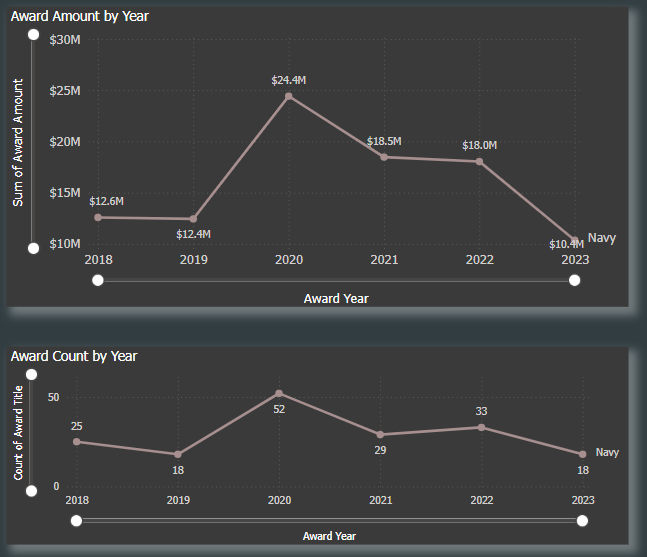Project 33 By the Numbers
The U.S. Navy's 2024 Navigation Plan outlines seven key focus areas, known as "Project 33" targets, where the Navy will invest its resources to boost readiness and combat capability by 2027. These areas are:
Eliminating Maintenance Delays: The Navy aims to eliminate delays in ship, submarine, and aircraft maintenance to improve combat surge readiness.
Scaling Robotic and Autonomous Systems: Integrating robotic and autonomous platforms to enhance operational capabilities quickly.
Creating Command Centers: Establishing Maritime Operations Centers (MOCs) capable of coordinating distributed, multi-domain warfare.
Recruitment and Retention: Focusing on recruiting and retaining the personnel needed to fill critical positions.
Improving Quality of Service: Ensuring living conditions and support services for sailors match their sacrifices.
Combat Training: Enhancing training methods to mirror real combat scenarios, both in physical and virtual environments.
Restoring Critical Infrastructure: Repairing and modernizing essential infrastructure that supports Navy operations globally.
These initiatives aim to strengthen readiness, address challenges in maintenance, technology integration, and workforce support, and position the Navy to prevail in future conflicts.
Gov Space created this report to assess how the Navy is leveraging SBIRs to help meet these goals. This report also identifies gaps in Navy spending that may reveal small business opportunities for vendors in the near future.
Navy SBIR/STTR Award Amounts and Award Counts by Year from 2018-2023
This chart highlights a multiyear decline in Navy SBIR spending despite, (relatively) steady award counts with the exception of 2020, related to the Covid-19 pandemic.
We should mention that the US Navy generally awards roughly one third as many SBIRs compared to the Air Force but double the US Army.
Next, I broke down a range of keywords to search the Navy SBIR abstracts to identify how the Navy has been spending, relative to the CNO’s new 7 focus areas, prior to now.
Focus Area 1: Eliminating Maintenance Delays
Other than a significant spike in 2021, fleet readiness, repairs, and maintenance-focused SBIRs have accounted for a notably small percentage of SBIR spending.
Focus Area 2: Scaling Robotic and Autonomous Systems
This focus area closely tracks with overall Navy spending, reflecting roughly 9-10% of SBIRs awarded each year.
Focus Area 3: Creating Command Centers
A strong opportunity for SBIR funding in the next year as the Service works to align with CNO priorities. Here is an area with strong evidence of underspending.
To learn about the remaining four focus areas and recommendations, please subscribe and we will provide that direct to your inbox!





